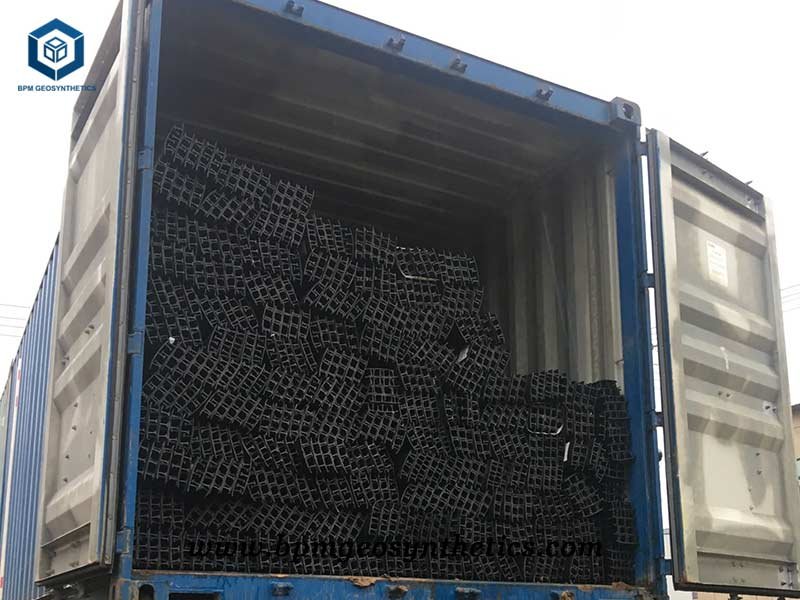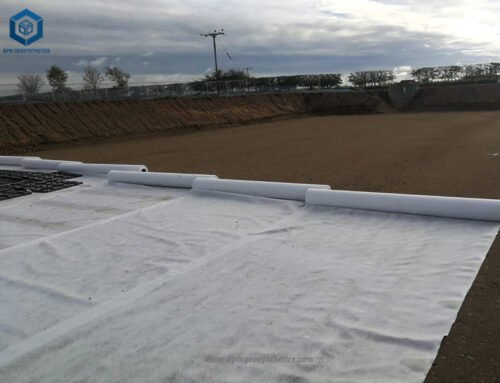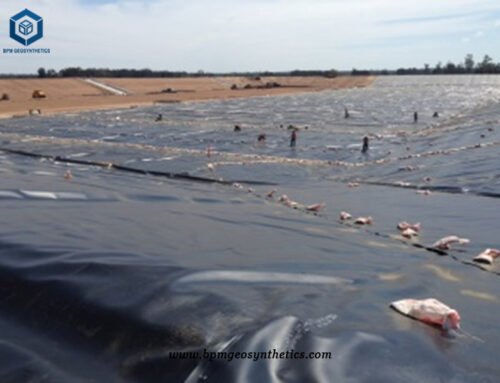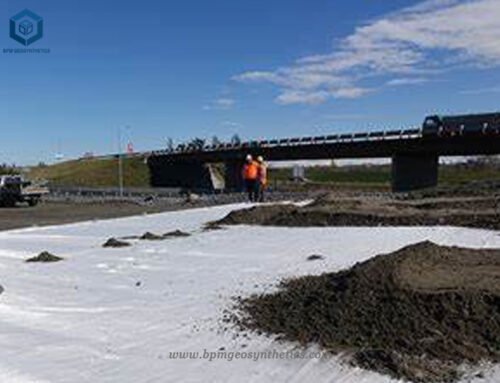HDPE poly lock, also called HDPE polylock, is an durable extruded HDPE concrete embedment strip with an E profile shape used for HDPE geomembrane attachment in construction.
1 What Is A Poly Lock?
A Poly Lock is a specialized product used in conjunction with HDPE (High-Density Polyethylene) geomembrane liners to create a secure and watertight joint in applications where leakage prevention is crucial. Poly Lock can be cast-in-place or inserted into wet concrete during the construction process.
The Poly Lock is designed with a smooth surface, approximately 14cm in width, which is ideal for welding the polyethylene sheets of the geomembrane liner. This welding surface ensures a high-strength and durable connection between the liner sections. Additionally, the Poly Lock features fingers or protrusions, typically 3-4cm in height, that are used to insert into the wet concrete. These fingers lock into the concrete, creating a firm and secure joint between the geomembrane liner and the concrete structure.
BPM HDPE Poly Lock is manufactured using high-density polyethylene resin, known for its exceptional performance and strength. This material is compatible with HDPE geomembrane liners and can be easily welded to create a seamless and reliable connection.
When installed correctly and utilized in conjunction with a geomembrane lining system, the HDPE Poly Lock effectively prevents seepage and leakage. By creating a complete and watertight barrier, the Poly Lock enhances the overall anti-seepage properties of the liner system, ensuring the integrity and reliability of containment applications.
HDPE Poly Lock is a specialized component used in combination with HDPE geomembrane liners to create strong and leak-resistant joints. Its smooth welding surface and concrete-locking fingers provide a durable connection, while the use of high-density polyethylene ensures its compatibility and strength. The HDPE Poly Lock contributes to the effectiveness of geomembrane lining systems in preventing seepage and maintaining the integrity of various containment structures.



2 Why Chose HDPE Poly Lock Saudi Arabia for Storage Tank Project?
HDPE Poly Lock Saudi Arabia is the preferred choice for a storage tank project due to its specific requirements. The customer specifically requested a new HDPE Poly Lock with a width of 16cm, indicating their need for a wider Poly Lock to suit their storage tank application. BPM, as a trusted supplier, engaged in discussions with the customer to understand the project details and negotiate the price.
After considering the project requirements and reaching an agreement on the pricing, the customer made the decision to order BPM ME-15 HDPE Poly Lock for their storage tank. The ME-15 HDPE Poly Lock is a suitable choice for this particular project, meeting the desired width specification and ensuring compatibility with the storage tank construction.
By selecting HDPE Poly Lock Saudi Arabia, the customer can benefit from the high-quality and reliable product offered by BPM. The wider width of 16cm provides a secure and robust connection for the storage tank, ensuring a durable and watertight joint. BPM’s commitment to customer satisfaction and competitive pricing further enhance the appeal of their products for various projects.
The customer’s decision to choose HDPE Poly Lock Saudi Arabia, specifically BPM ME-15 HDPE Poly Lock with a width of 16cm, demonstrates their confidence in the product’s suitability for their storage tank project. BPM’s engagement in discussing project details and negotiating pricing highlights their commitment to meeting customer requirements.
3 Specifications of HDPE Poly Lock for Storage Tank Project in Saudi Arabia
- Total Poly lock quantity – 9,820 m
- Polylock specifications – ME-15
- Expansion size – 2.9m
- One 20GP container
After finished production of all ordered HDPE polylock products, we sent samples to the third party company for test and finally got TUV certification for the client. The customer was very satisfied with BPM HDPE polylock products.
About BPM
BPM is the leading geomembrane manufacturer and supplier, we have provided many types of effective and state of the art geomembranes, geotextile and geosynthetics products to over 36 countries. Our main innovative, high quality geosynthetics products include geomembrane, geotextiles, geocell, geosynthetic clay liners (GCLs), drainage boards, geogrids, etc. BPM brand PET geosynthetics had been certificated by the ISO9001, ISO14001,OHSAS18001 Soncap, SASO and BV certificates and passed the test of SGS and Intertek, etc.
BPM Geomembrane is also providing professional design and installation service. OEM and ODM are also available. If you have any questions or inquiries, please contact us, we will reply as soon as possible.





